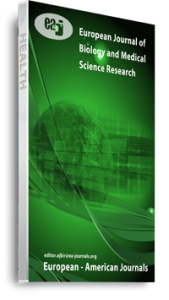Background and Purpose: Antifungal effects of a HydroxyEthyl-Heptadieyl Phosphine Oxide (HEHPO) with unprotected hydroxy group (3-Diphenylphosphinoyl-5-methtlhepta-3,4-dien-2-ol) on pathogenic Gram-positives and Gram-negatives bacteria had been established. HEHPO (50 mg/ml, 25 mg/ml, 12.5 mg/ml, 6.25 mg/ml and 3.125 mg/ml) exerted different inhibitory effect on different bacterial cells in vitro. The effects of HEHPO on prokaryotic cells have not been studied. The present study was aimed to assess the antibacterial activity of HEHPO on pathogenic Gram-positive and Gram-negative bacteria. In vitro antimicrobial test: Escherichia coli 3398, Staphylococus aureus 745, Bacillus subtilis 6633, Salmonella Typhimurium 3591, Listeria monocytogen 863 and Enterobacter aerogenes 3691 were treated for 24 hours with HEHPO (50 mg/ml, 25 mg/ml, 12.5 mg/ml, 6.25 mg/ml and 3.125 mg/ml), Sefpotec (250 mg/ml). The antibacterial activity was assayed by the well diffusion method with digital caliper.Determination of minimum inhibitory concentrations (MICs): The MIC of HEHPO, that shows antimicrobial activity, were determined by methods as described by [17] and MICs were read in µg/ml after overnight incubation at 37oC. All experiments were made in replicate. Determination of Minimum bacteriocidal concentration (MBC): The MBC were carried out to check whether the test microbes were killed or only their growth was inhibited. Nutrient Agaragar was prepared and sterilized at 121oC for 15 minutes, the medium was poured into sterile petridishes and were allowed tocool and solidify. The contents of the MIC in the serial dilution were then subcultured onto the prepared medium, incubation was made at 37oC for24 h, after which each plate was observed forcolony growth. The lowest concentration of the HEHPO without a colony growth was recorded asthe MBC. HEHPO had higher antibacterial activity than tested antibiotic– Sefpotec. Key Results: The results revealed variability in the inhibitory concentrations of HEHPO for given bacteria. HEHPO at concentration 50 mg/ml for 24 hours notably inhibited growth of Gram-negative bacteria E. coli 3398 (28.77 mm mean zone of inhibition), Е. aerogenes 3691 (20.87 mm mean zone of inhibition) and S. Typhimurium 745 (20.49 mm mean zone of inhibition). HEHPO did not inhibited Gram-positive bacteria S. aureus 745, B. subtilis 6633 and L. monocytogen 863. Conclusions and Implications: Based on the results obtained we can conclude that the examined HEAPO has bactericidal activity towards pathogenic bacteria, but in different concentrations. HEHPO possesses biological activity, which is not well studied. We know only from literary data that they are used for inhibiting the biosynthesis of sterol from the pathogen responsible for Pneumocystis-carinii pneumonia (PCP) -a disease similar to AIDS [2]. In our previous studies was shown that the Bifunctionalized Allene with protected hydroxy group (Dimethyl 3-methyl-1-[1-(tetrahydro-2H-pyran-2-yloxy)-ethyl]-hepta-1,2-dienephosphonate) (BA-1) exhibited antibacterial [8] and antifungal activity [9]. The results obtained show for the first time the existence of antifungal activity of HEHPO towards various pathogenic bacteria.
Keywords: 4-dien-2-ol), : Antibiotic, Antibacterial activity, HydroxyEthyl-Heptadienyl Phosphine Oxide (HEHPO) (3-Diphenylphosphinoyl-5-methtlhepta-3

